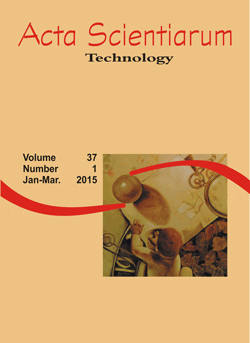<b>Dry ripened mortar with quarry waste and rubber powder from unserviceable tires
DOI:
https://doi.org/10.4025/actascitechnol.v37i1.19907Keywords:
plastering, deformation modulus, crackingAbstract
Stone-quarry fines have been evaluated in mortar and concrete, but have presented drying shrinkage and consequently higher incidence of cracks than those with natural sand. This study compared the dry ripened mortar in two types of aggregates added of 8% rubber powder. It was used quicklime, artificial and natural sand in volumetric proportions of 1:6. Mixtures were oven-dried, received the cement, establishing the volumetric proportion of 1: 1.5:9. Inplastic state, we evaluated aspects such as consistence, air content, water retention and bleeding; whereas compressive strength, static deformation modulus and water absorption by capillarity was determined in hardened state. Cracking aspects were evaluated in substrate. As a result, the mortar with artificial sand showed higher increases in compressive strength, capillarity rate and cracking, and greater reductions in air content and bleeding. As for the rubber powder, exhibited a greater reduction in the cracking rate and capillarity was found.
Â
Downloads
Downloads
Additional Files
Published
How to Cite
Issue
Section
License
DECLARATION OF ORIGINALITY AND COPYRIGHTS
I Declare that current article is original and has not been submitted for publication, in part or in whole, to any other national or international journal.
The copyrights belong exclusively to the authors. Published content is licensed under Creative Commons Attribution 4.0 (CC BY 4.0) guidelines, which allows sharing (copy and distribution of the material in any medium or format) and adaptation (remix, transform, and build upon the material) for any purpose, even commercially, under the terms of attribution.
Read this link for further information on how to use CC BY 4.0 properly.



















8.png)




